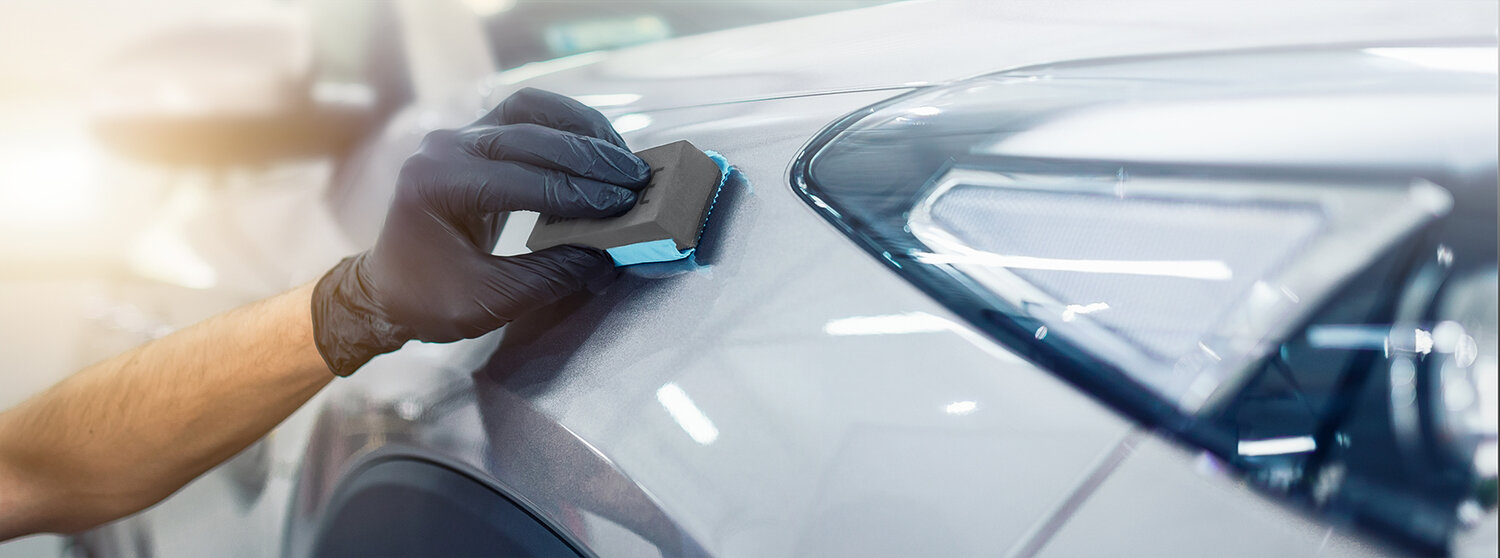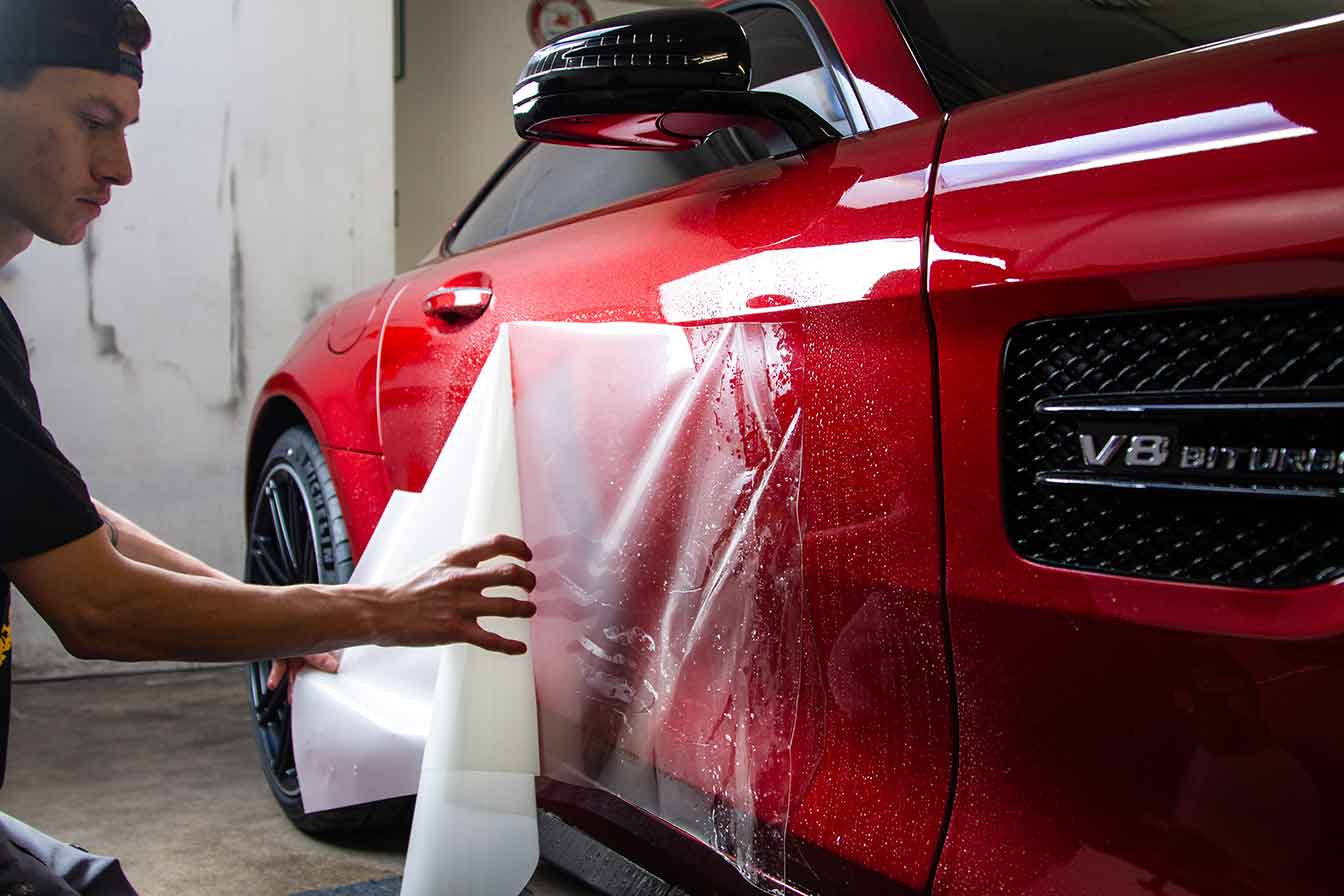Comprehending the Scientific Research Behind Ceramic Coating for Boosted Vehicle Longevity
The science of ceramic layer is transforming vehicle maintenance by giving a powerful guard versus harsh ecological elements. At its core, this innovation harnesses the power of silicon dioxide and titanium dioxide to create a sturdy, protective layer. Yet just what makes these substances so efficient in guarding a car's exterior? As we explore the detailed make-up and application process of ceramic coverings, we reveal the keys behind their remarkable protection and long life. Just how does this compare to typical methods, and what effects does it have for automobile upkeep in the long term? The solutions may stun you.

Make-up of Ceramic Coatings
Ceramic coatings are primarily composed of silicon dioxide (SiO2), which is obtained from natural products like quartz and sand. In addition to SiO2, ceramic finishings often integrate titanium dioxide (TiO2) for enhanced UV protection and raised resistance to environmental toxins.
The formula of ceramic layers is a meticulous process where the focus of SiO2 can significantly influence the finish's efficiency. Greater SiO2 content normally results in better resilience and firmness, adding to the finishing's capacity to withstand scrapes and chemical etching. The equilibrium of elements is important; too much SiO2 can make the covering breakable, while as well little can endanger its safety buildings.
Makers may additionally incorporate added compounds, such as polysilazane, to boost versatility and simplicity of application. These ingredients enhance the finishing's hydrophobic homes, guaranteeing water and pollutants grain off the surface area easily. This engineered composition emphasizes the efficacy of ceramic layers in securing a vehicle's exterior against a variety of adverse conditions.
Application Refine Described
Using a ceramic coating to a vehicle involves several essential actions, each vital to making sure optimal attachment and efficiency of the protective layer - ceramic coating. The procedure begins with an extensive clean and purification of the vehicle's surface area to eliminate dust, gunk, and previous waxes or sealers. This step is critical as any type of impurities left externally can prevent the finishing's capacity to bond efficiently
Adhering to the initial cleaning, the following step includes brightening the vehicle to get rid of any kind of imperfections, such as swirl marks or scratches. Sprucing up ensures a smooth surface, which is vital for the finish to adhere correctly and give an uniform finish. After polishing, a surface area prep work spray is used to eliminate any type of continuing to be residues and ensure that the surface is completely tidy.

Safety Benefits
Typically hailed for its remarkable safety qualities, a ceramic finish offers many advantages that considerably boost vehicle toughness. At its core, ceramic coating develops a hard, semi-permanent obstacle over a vehicle's exterior, which acts as a shield versus different ecological dangers.
Furthermore, ceramic layers show hydrophobic residential or commercial properties, indicating they repel water and help with his comment is here a self-cleaning impact. This feature reduces the adherence of dirt and mud, simplifying upkeep and cleansing processes. The finish's resistance to chemical etching better ensures that the car's surface stays unblemished in spite of direct exposure to rough cleansing representatives and toxins.
In enhancement to these safety advantages, the ceramic coating enhances a car's aesthetic appeal by creating a glossy finish that accentuates color deepness and quality. This not just maintains the lorry's aesthetic charm however likewise adds to its long-lasting value by preserving the integrity of its outside with time.
Contrasting to Typical Techniques
Unlike standard techniques of car protection, such as shaving or sealers, ceramic finishes use a more long-lasting and sturdy remedy. Where waxes and sealants generally provide a temporary layer of defense, commonly needing reapplication every few months, ceramic layers create a semi-permanent bond with the automobile's paint. This bond produces a protective layer that is immune to environmental contaminants, UV damages, and minor abrasions.
Traditional waxes are largely made up of natural components you can try these out like carnauba wax, giving a shiny finish yet lacking the robust safety qualities of ceramic layers. Sealants, while artificial and offering somewhat better durability than waxes, still drop short in contrast to the resilience and chemical resistance of ceramic layers. The sophisticated modern technology get redirected here of ceramic finishes includes nanotechnology, which allows them to fill out tiny blemishes in the paint surface, causing a smoother and more hydrophobic surface.
In terms of application, ceramic coatings need an even more precise procedure, often requiring expert installment to guarantee optimum performance. This contrasts with the fairly uncomplicated application of waxes and sealants, which can be used at home. Nevertheless, the premium protection and aesthetic enhancement given by ceramic coverings validate the financial investment for those looking for long-term car preservation.
Long Life and Upkeep
How does the longevity of ceramic coverings translate right into convenience of upkeep for car owners? The innovative formula of ceramic finishings offers a robust safety layer on the car's surface, which substantially extends the life expectancy of the vehicle's exterior coating.
Furthermore, the hydrophobic nature of ceramic layers enables water and other fluids to grain up and roll off the surface area, carrying dirt and particles with them. While the layer itself is long-lasting, it is not completely maintenance-free. Therefore, ceramic layers provide an important equilibrium in between lasting durability and simplified maintenance for car treatment.
Final Thought
Ceramic layers, with their innovative chemical make-up of silicon dioxide and titanium dioxide, give an awesome obstacle versus ecological damage, considerably enhancing car resilience. The hydrophobic buildings advertise self-cleaning, minimizing maintenance efforts and preserving visual allure. When compared to conventional methods, ceramic coatings offer premium security against UV rays, oxidation, and chemical etching. This technology prolongs the lifespan of automobile outsides, making it an innovative service for long-term preservation and marginal maintenance.
The formulation of ceramic coatings is a thorough process where the concentration of SiO2 can substantially affect the finishing's performance.Using a ceramic finish to a car entails a number of vital steps, each necessary to ensuring optimal attachment and efficiency of the protective layer.Frequently hailed for its exceptional protective qualities, a ceramic finishing uses numerous advantages that significantly boost car durability. The advanced formulation of ceramic layers offers a robust safety layer on the car's surface area, which considerably extends the lifespan of the car's exterior surface.Ceramic finishes, with their innovative chemical composition of silicon dioxide and titanium dioxide, give a powerful obstacle against environmental damage, considerably improving vehicle toughness.